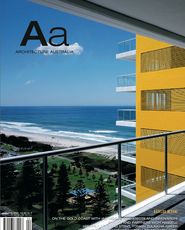CRITICS, GOVERNMENT, ARCHITECTURE
Architecture concerns buildings as objects and spaces, but it is also about the structures through which these objects and spaces are funded, commissioned, produced, presented and discussed. Two recent symposia provided quite different opportunities to reflect on these wider institutional and discursive contexts.
The first was organized by Stan Fung and the History and Theory Research Group at UNSW’s Faculty for the Built Environment and concerned the complexities of writing about architecture in professional journals such as Architecture Australia. Set up as an intimate round-table discussion between architectural commentators and critics (mostly from Sydney), the aim was to explore the opportunities and constraints of the 1,200-word review, to contemplate which aspects of architecture are privileged and which are glossed over in such a format, to consider how criticism might be productive or useful for architectural practice, and so on.
The event unfolded as a loose, flowing discussion around writing, media and the profession. A particularly interesting debate followed on from Naomi Stead’s widely discussed article on criticism published in Architecture Australia November/December 2003. This concerned the critic’s role in making judgments about design. Is it necessary to determine if a building is “good” or not? Opinions differed. Stead argued that forming judgments is one of the responsibilities of the critic, and that this should be taken very seriously. Others countered that it is only possible to make judgments within specific frames of reference, and that these are always under negotiation. With each review the critic must decide what is a relevant or useful frame and proceed accordingly – different projects will raise different issues, which may not be about “good” or “bad”. Charles Rice described this as “writing away from the building”. He suggested that “a reviewer might use a building and a building review to stage a discussion that does not have closure with that building”. Similar desires to use the particularities of a project to open architecture up to broad contemporary issues were shared by many participants.
Ideas of what constitutes “good design” and how to assess it also exercised the participants in the second event, who often have to articulate such issues in immediate and pragmatic ways. “Design, Government & Politics” brought government architects from across Australia together at the University of Melbourne. Organized by Paolo Tombesi, Blair Gardiner and Tony Mussen, it was part of their research for this year’s Sisalation Prize, which explores what a sustainable profession might be. The well-attended event was structured as a public discussion which aimed to generate conversation with and among those who can both affect the profession and influence government. Discussion ranged across the promotion of quality built environments through advocacy, the effect of procurement processes on built outcomes, the role of design review panels and design guides in improving design, and the potential for competitions and demonstration projects to lead the way.
The various government architects were at pains to point out that they saw the role as apolitical – that is, their advice is not coloured by party politics. But, as oneaudience member commented, their activities are political in the broader sense – she argued that this should be embraced, that encouraging things like good-quality affordable housing, sustainable practices et cetera, is inherently political. This is seen by the architectural community as a great opportunity. A need was also voiced for an equivalent role at federal level, to expand these opportunities.
The two events concerned very different topics, but each was designed bring together people who usually work apart, with the idea that publicly discussing shared experiences might generate further insight about how to proceed, both individually and as a profession. Together, the symposia also demonstrate the effective roles that universities can take in initiating conversations and reflections on matters that are of direct concern to the profession.
›› JUSTINE CLARK















